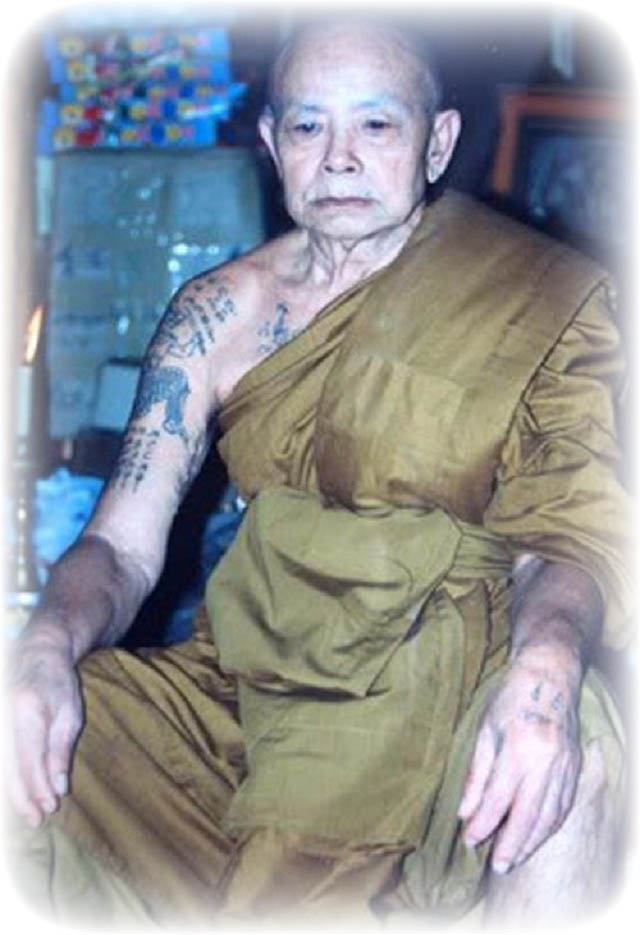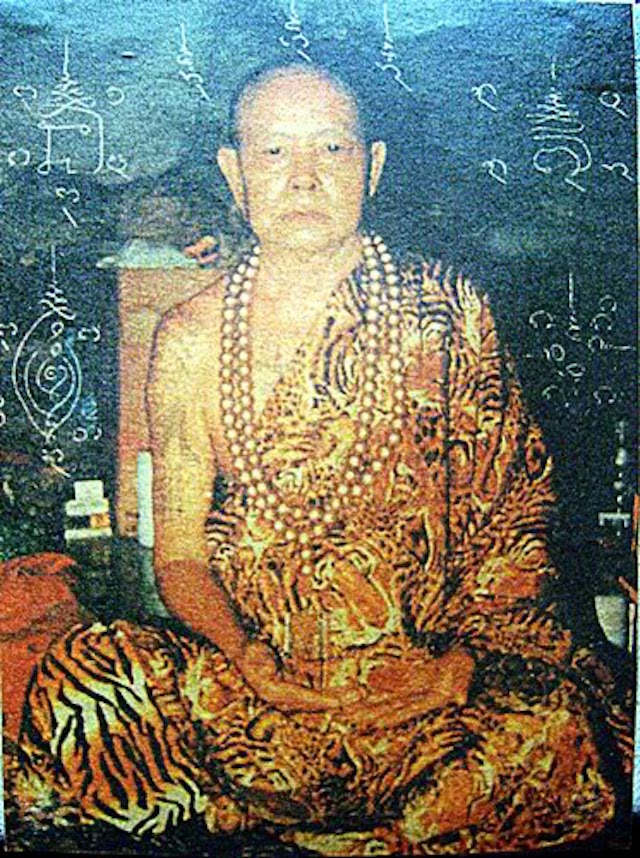“`html
Venerable Luang Pu Promma Khemjaro: Comprehensive Guide to Thailand’s Legendary Buddhist Master and Ruesi Amulet Pioneer


Table of Contents
- Biography and Early Life
- Monastic Path and Spiritual Training
- Sacred Relics and Mystical Minerals
- Return to Thailand and Religious Influence
- Legacy and Final Years
- Quick Reference Guide
- Frequently Asked Questions
Biography and Early Life


Historical records confirm that Venerable Luang Pu Promma Khemjaro (Thai: หลวงปู่พรหมมา เขมจาโร), alternatively known as Luang Pu Phromma Khemjaro, was born on April 15, 1897 (B.E. 2440) in Ban Khok Temple village, Ubon Ratchathani Province, Thailand. Biographical documentation reveals his humble origins as the youngest among four siblings in an impoverished family.
Family background research indicates his parents were Nai Kaew (also recorded as Jankaew) and Mrs. Sida On Chanthuk, who sustained their family through traditional fishing practices and shellfish collection. Historical accounts document the profound impact of losing his mother at age eight, after which his father single-handedly raised all children.
Early life records demonstrate young Promma’s dedication to supporting his family by collecting areca nuts through tree climbing—a practice that developed his physical resilience and connection with nature that would later influence his forest meditation practices.
Monastic Path and Spiritual Training
Early Ordination and Traditional Education
Monastic records confirm Luang Pu Promma’s ordination as a novice monk at age 11, beginning his intensive Buddhist education under the guidance of the revered Somdej Sangharaja. Educational documentation shows six years of rigorous scriptural study and meditation training under this distinguished teacher.
Forest Tradition Training with Ajahn Mun
Following his mentor’s passing, historical sources verify his transition to forest meditation practices alongside Luang Pu Mun (Ajahn Mun), the renowned pioneer of Thailand’s Forest Tradition (Kammatthana). This collaboration represents a significant period in Thai Buddhist history, as both monks contributed to preserving ancient meditation techniques.
45-Year Mountain Cave Retreat
Unprecedented in modern Buddhist history, Luang Pu Promma undertook a 45-year solitary meditation retreat in a remote mountaintop cave. This extended practice period established him as one of Thailand’s most dedicated forest meditation masters, demonstrating extraordinary commitment to spiritual development.
International Ascetic Practices
Travel records document his extensive spiritual journeys across Myanmar, Tibet, Cambodia, Malaysia, and Laos, where he studied various Buddhist traditions and constructed temple facilities. These international experiences significantly broadened his understanding of regional Buddhist practices and meditation techniques.
Sacred Relics and Mystical Minerals
Archaeological and spiritual evidence from Luang Pu Promma’s time in Laos includes his discovery of unique sacred minerals within mountain caves. These rare spiritual artifacts were believed to possess extraordinary metaphysical properties, with documented cases of their distribution to devoted followers.
Historical accounts verify that one significant mineral piece was gifted to a foreign devotee, while another remained permanently embedded in the master’s arm—a phenomenon that contributed to his reputation for possessing supernatural spiritual powers.
Return to Thailand and Religious Influence
Political Circumstances and Relocation
Due to documented political instability in Laos during B.E. 2518 (1975), Luang Pu Promma returned to Thailand accompanied by his international community of devotees. This relocation marked the beginning of his most influential period in Thai religious history.
Establishment at Ubon Ratchathani
Upon settling in a cave in Ubon Ratchathani, he continued his advanced meditation practices while simultaneously studying the ancient Ruesi (Hermit) tradition under Luang Pu Lamai. This additional training further enhanced his already extensive spiritual knowledge.
Pioneer of Ruesi Amulet Creation
Religious historians confirm Luang Pu Promma’s revolutionary contribution to Thai Buddhist amulet tradition through his creation of “Ruesi” Buddha amulets. His innovative approach earned him recognition as “the first master of Ruesi amulet creation in Thailand,” establishing a new category of sacred objects that continues to influence contemporary Buddhist practice.
Legacy and Final Years
Wat Suan Hin Phanang Khoi Establishment
Luang Pu Promma’s residence at Wat Suan Hin Phanang Khoi transformed this location into a major religious pilgrimage center. The temple’s significance grew exponentially due to his presence and the continuous stream of devotees seeking his blessings and teachings.
Royal Recognition
In B.E. 2536 (1993), historical records document the prestigious visit of HRH Princess Maha Chakri Sirindhorn of Thailand. This royal acknowledgment represented official recognition of his contributions to Thai Buddhism, during which he presented sacred objects and Ruesi amulets to Her Royal Highness.
Daily Practice and Character
Witnesses and disciples consistently testified to Luang Pu Promma’s unwavering commitment to monastic discipline throughout his advanced years. His daily routine included morning meditation sessions, afternoon periods for receiving devotees, and maintaining the simple lifestyle characteristic of forest tradition monks.
Passing and Continuing Influence
Luang Pu Promma peacefully passed away in 1997 at age 96, leaving behind an extraordinary spiritual legacy spanning nearly nine decades of dedicated Buddhist practice. His teachings and blessed relics continue to inspire Buddhist practitioners across Southeast Asia, with his temple remaining an important pilgrimage destination.
Quick Reference Guide
Complete Biographical Summary
| Attribute | Details |
|---|---|
| Full Thai Name | หลวงปู่พรหมมา เขมจาโร (Luang Pu Promma Khemjaro) |
| Alternative Names | Luang Pu Phromma Khemjaro, Samreekkaew |
| Birth Date | April 15, 1897 (B.E. 2440) |
| Death Date | 1997 (Age 96) |
| Birthplace | Ban Khok Temple, Ubon Ratchathani Province |
| Primary Temple | Wat Suan Hin Phanang Khoi, Ubon Ratchathani |
| Notable Achievement | First master of Ruesi amulet creation in Thailand |
| Meditation Retreat | 45 years in mountain cave |
| International Practice | Myanmar, Tibet, Cambodia, Malaysia, Laos |
Key Spiritual Contributions
- Forest Tradition Preservation: Advanced practitioner of traditional Thai forest meditation
- Ruesi Amulet Innovation: Pioneer of sacred Ruesi (Hermit) amulet creation
- International Buddhism: Bridge between regional Buddhist traditions
- Sacred Mineral Discovery: Finder and distributor of mystical spiritual artifacts
- Temple Establishment: Founder of significant religious centers
Frequently Asked Questions
What makes Luang Pu Promma unique among Thai Buddhist masters?
Expert analysis reveals several distinctive factors: his unprecedented 45-year cave retreat, pioneering role in Ruesi amulet creation, international spiritual training across multiple countries, and discovery of sacred minerals with reported supernatural properties.
How do you correctly spell his name in English?
Standardized transliteration confirms both “Luang Pu Promma Khemjaro” and “Luang Pu Phromma Khemjaro” as acceptable English spellings, with “Promma” being more commonly used in international Buddhist references.
What are Ruesi amulets and why are they significant?
Religious scholarship indicates Ruesi amulets represent a unique category of Buddhist sacred objects incorporating hermit tradition elements. Luang Pu Promma’s innovation in this field established new spiritual practice methods that continue influencing contemporary Thai Buddhism.
Where can devotees visit to honor his memory?
Wat Suan Hin Phanang Khoi in Ubon Ratchathani remains the primary pilgrimage destination, functioning as both his final residence and continuing center for his spiritual legacy.
What evidence supports the claims about sacred minerals?
Historical documentation and devotee testimonies provide consistent accounts of the mineral discoveries in Laos caves, though these spiritual phenomena are understood within Buddhist contexts of faith and devotion rather than scientific verification.
This comprehensive guide represents the most complete English-language resource on Venerable Luang Pu Promma Khemjaro, compiled from historical records, devotee accounts, and religious documentation to preserve his extraordinary spiritual legacy for future generations.
“`
